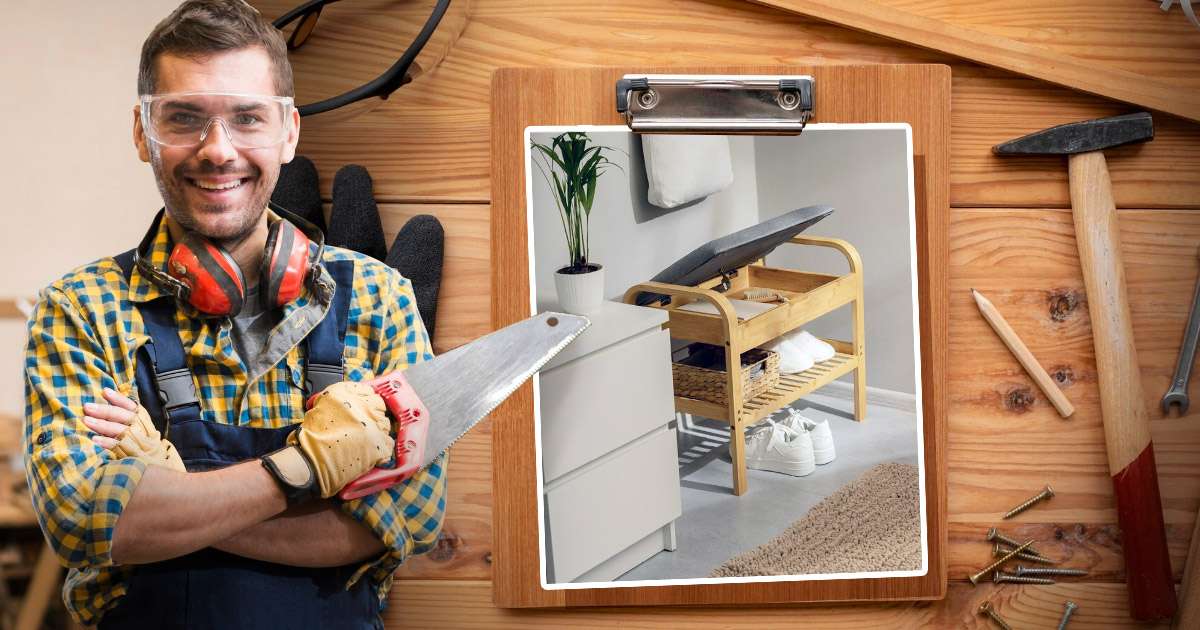Step-by-Step Guide to Building a DIY Storage Bench

A DIY storage bench is a fantastic addition to any home, combining seating and storage in one clever design. Whether you’re looking to tidy up a small entryway or add extra storage in your living room, building your own bench offers a cost-effective solution. The good news is that creating a bench seat with storage isn’t as complicated as it may seem, even for beginners. In this guide, we’ll walk you through everything you need to know, from tools and materials to the step-by-step process.
Is Building a Storage Bench Easy for Beginners?
Building a storage bench is absolutely doable for beginners, especially if you’re looking for a project that doesn’t require advanced skills. While woodworking might seem intimidating, constructing a simple storage bench is a great way to get started. The project mostly involves basic tasks like measuring, cutting, and assembling, which are easy to learn with a little practice.
You don’t need to be an expert carpenter to create something functional and stylish; just take your time and follow the steps carefully. With the right tools and materials, you’ll be amazed at what you can build on your own. Even if you’re a complete novice, there are plenty of beginner-friendly guides that can walk you through the process step-by-step. The best part is, at the end, you’ll have a custom storage bench that fits your space perfectly!
Tools & Equipment Needed for the DIY Project
Before diving into your DIY storage bench project, it’s important to gather everything you’ll need. Having the right tools makes the process smoother and safer. Here’s a closer look at what you’ll need to get started:
- Measuring Tape
- Saw
- Drill
- Screws
- Wood Glue
Materials You’ll Need
Now that you’ve got the tools, it’s time to gather your materials. The right materials will ensure your storage bench is strong, durable, and looks great. Here’s a list of what you’ll need for this project:
Wooden Boards/Plywood
You’ll need sturdy plywood for the top, bottom, and sides of your storage bench. For the frame and structure, you might also use hardwood to provide extra support. Plywood is typically affordable and easy to cut, making it a popular choice for DIY furniture.
Hinges
Hinges are necessary if you want the top of your storage bench to open and close. Make sure to choose heavy-duty hinges if your lid is large or you plan on storing heavy items inside.
Cushion or Fabric
If you want to make your storage bench comfortable for sitting, consider adding a cushion or some fabric to the top. A simple foam cushion covered with fabric can make your bench functional and cozy, especially for an entryway or living room.
Paint or Stain
To finish your bench, you can either paint it for a bold, modern look or stain it to highlight the natural wood grain. You can also apply a clear sealant to protect the wood from scratches and spills. Choose a finish that complements your home’s decor.
Step-by-Step Guide: Building a Storage Bench
Building a storage bench is a rewarding project, and breaking it down into manageable steps makes it less overwhelming. Here’s a simple guide to help you through the process:
Measure and Plan Your Storage Bench
Start with a clear plan and measurements. First, decide where you want to place the storage bench and measure the available space. Make sure you account for both the width and height so your bench fits comfortably in the area. You’ll also want to think about the depth of the bench for storage—too shallow, and it won’t fit much; too deep, and it might be hard to access items at the back. Once you’ve decided on the size, sketch a design to guide you through the build. This will help you determine how much wood you’ll need and what kind of joints or features to include.
Cutting the Wood Pieces
Now it’s time to cut the wood. Start by cutting the plywood or hardwood to your desired dimensions. You’ll need pieces for the seat, the frame, the bottom, and any internal dividers if you’re creating separate storage compartments. Be precise when cutting to ensure all pieces fit together well. If you’re using a saw, make sure to wear safety gear, like goggles, to protect your eyes from wood chips.
Assembling the Frame
After cutting the wood, begin assembling the frame of the bench. Start by attaching the side pieces to the bottom piece using screws and wood glue. Ensure that everything is square and level—this is crucial for a sturdy structure. The frame provides the foundation for the bench, so double-check the alignment before moving forward. Reinforce the corners with extra screws or corner brackets if needed to ensure your storage bench is stable.
Adding the Dividers (Optional)
Adding dividers to your storage bench can help you stay organized. If you want separate compartments inside your bench, cut and attach vertical pieces of wood inside the frame. These can be spaced to fit different items, like shoes, blankets, or books. Make sure the dividers are sturdy and attached securely so they don’t wobble when you open the lid.
Attaching the Lid with Hinges
Next, you’ll attach the lid to your bench using sturdy hinges. The hinges allow you to easily access your storage space whenever you need it. If you’re storing heavy items, make sure to use strong hinges that can support the weight of the lid. You can also install soft-close hinges to prevent the lid from slamming down. Make sure to position the hinges properly and secure them tightly for smooth functionality.
Sanding and Finishing
Once your bench is assembled, it’s time to smooth out the rough edges. Use sandpaper or a power sander to gently smooth the entire surface. Sanding will remove splinters and give the bench a polished finish. After sanding, apply your choice of paint, stain, or sealant to protect the wood and give it the look you want. Don’t forget to let it dry completely before using it. You can also add a cushion on top for extra comfort if you plan to use your bench as seating.
Why Building a DIY Storage Bench is Worth It
Not only is building a storage bench a practical solution for adding extra seating and storage, but it’s also an opportunity to express your creativity. By making it yourself, you can customize it to match your home’s style and make sure it fits perfectly in your space.
Plus, DIY projects like this can save you a lot of money compared to buying pre-made furniture. You get the satisfaction of completing a project yourself, and the end result is something that’s functional, personalized, and unique. It’s a win-win!

